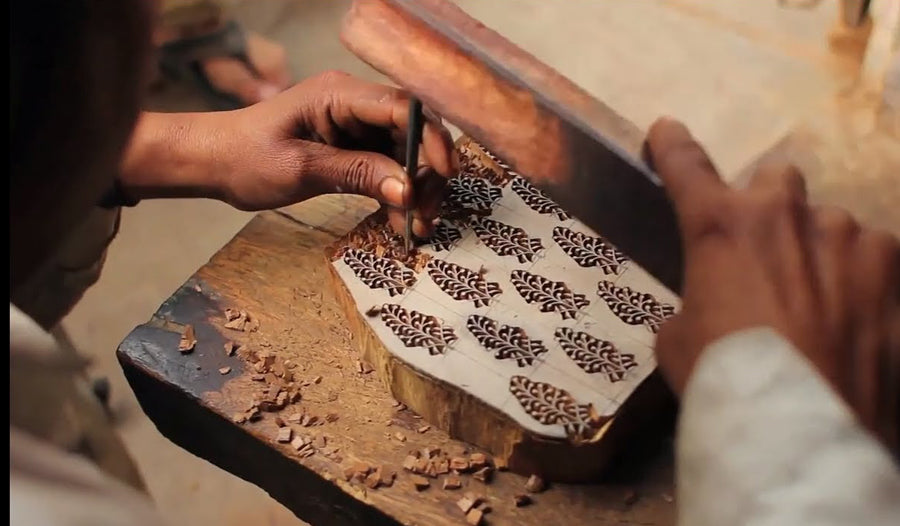
Slow TV from Bagru, India

From dawn to dusk on Saturday 30 October we will be live streaming a Slow TV experience from Bagru, a block printing town outside of Jaipur in India. The experience will give viewers a glimpse into the world of local artisans: to see blocks being carved, the slow meticulous process of printing with a mud resist, then follow the cloth as it is dyed and laid out in the sun to dry as life goes on in Bagru in real time.

Bagru is popular for its brilliance in organic natural dyed hand block printed cotton textiles made by the hindu Chhippa (from the word Chhipayi or to print) or printer community who have now been involved in hand block printing tradition for over three centuries. Wooden hand block printing is believed to have come to India from China where it was invented between 4th and 77th century A.D. and its practice began under the Tang Dynasty. It is said that blocks cut from wood were used to print textile pieces with the religious Buddhist texts that were carried as charms for protection by travellers on the Silk Route and is probably how it spread to other parts of the world.
India is believed to have been block printing since the Indus Valley Civilisation, trading block printed textiles since the 12th century and becoming renowned for their excellence in printed cotton. Bagru hand block printed textiles critically depend on the skilled craftsmanship of the wooden hand block carvers. Traditionally, training for the art of block carving begins at a very young age (some claim to have started at the age of ten) and a young apprentice may take five to six years to master the skill.

The traditional process of bleaching the fabric, dyeing, resisting and block printing has remained relatively unchanged. The print designs consist of florals, geometrical shapes, animal and bird patterns, printed in combinations of natural dyed colours. Blues from indigo, greens from indigo mixed with pomegranate, black from iron, red from madder root and yellow from turmeric. Originally only consumed by the local population of Bagru, printed textiles were restricted to be used on the basis of its printed motifs and colour by specific caste and communities like the gujjars, minas, chhippas which acted as visual representations of people in the region. Today, its popularity among all ages and communities, both in India and abroad, is unrivalled by many other forms of printed textiles.
Hand block printing in Bagru is a unique and environmentally friendly technique of natural dyeing and mud resist, popularly known as dabu printing, a method which involves resisting the motifs with mud and then over dyeing in indigo which results in an area of resisted prints.

As a Slow TV experience, expect a slower pace of documenting hand block printing that takes the whole day, follows each step and the moment in between. Hosting this year's Slow TV is Studio Bagru, an independent studio whose mission is to foster grassroots entrepreneurial and design innovation, with a vision to educate consumers about sustainable and ethical textiles and fashion through co-design workshops, collaborations, and popups, as well as creating beautiful hand block printed textiles.
This event is a free, subscriber only event. You can subscribe, if you don't already on the Selvedge website and you will be sent the access code in the coming days.
You can also access the Slow TV event if you purchased a ticket to the Selvedge World Fair 2021. Tickets are still available and are available here: World Fair 2021 tickets


3 comments
Need code to watch printing video
Iam already a subscriber and have bought a world fair ticket HOW DO I ACCESS THIS. Please send code
I’m interested in this slow TV program.
About the Selvedge World Tickets, I bought them and I never got the access code to see the Fair 2021